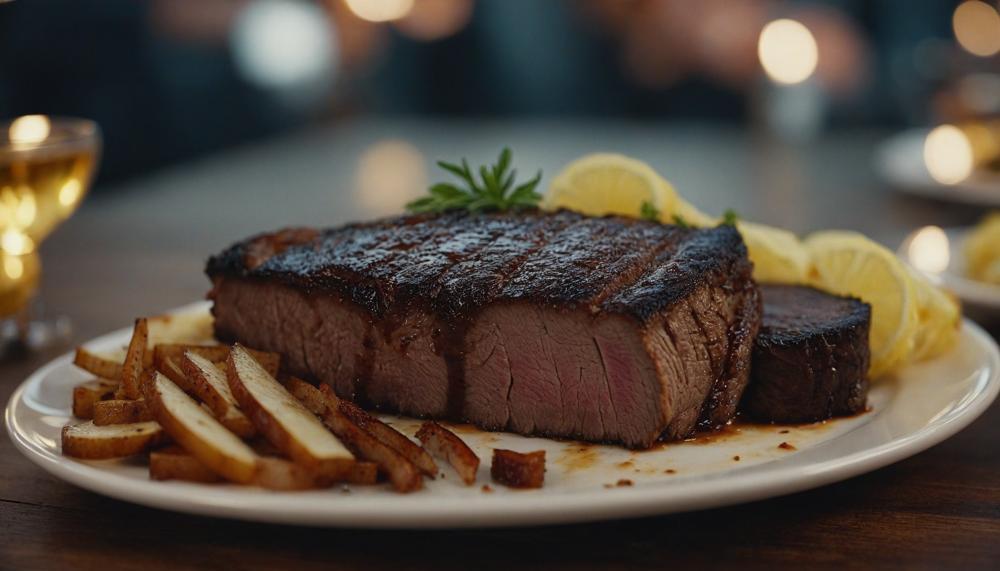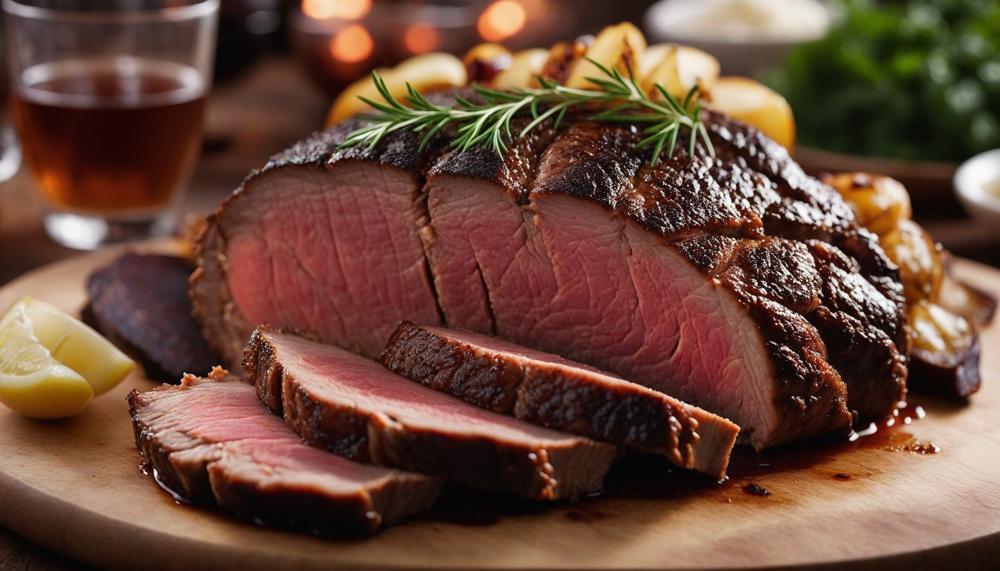Have you ever wondered why pitmasters and barbecue enthusiasts insist on letting brisket rest after smoking? The answer is simpler than you might think, but it’s the cornerstone of crafting a mouth-watering, juicy brisket. To achieve the best flavor and texture, it’s crucial to let your brisket rest for at least one hour after it comes off the smoker.
This pause in the cooking process allows the juices within the meat to redistribute, ensuring that every slice is moist, tender, and packed with flavor.
Why does this matter? Cutting into a brisket too soon after smoking means you risk losing all those precious, flavor-packed juices. To help you master the art of brisket, here are the key takeaways on resting your smoked brisket:
- Minimum Rest Time: Always rest your brisket for at least one hour.
- Juice Redistribution: Allows internal juices to thicken and spread, enhancing moisture and flavor.
- Temperature Management: Pull brisket off the smoker at 195°F; it will continue to cook internally up to 202°F.
- Resting Equipment: Consider using a Cambro or faux Cambro for longer resting periods without sacrificing the bark’s texture.
- Covering Technique: Tent the brisket with foil to keep it warm, allowing it to breathe and prevent sweating.
Understanding these principles can transform your brisket from simply smoked to spectacular. So, why is resting your brisket so crucial? Let’s dive deeper into the science and art behind this essential step.
Contents
Understanding Brisket Resting Basics
Resting brisket after smoking significantly enhances its tenderness and juiciness by allowing the meat’s internal juices to redistribute evenly. This process is crucial as it prevents moisture loss and ensures a more enjoyable eating experience.
During smoking, the brisket undergoes intense heat which forces moisture towards its surface and centre. If not properly rested, cutting into it immediately can cause these juices to escape, resulting in a drier and tougher texture.
| Impact of Resting Brisket | Details | Importance |
| Tenderness | Allows collagen to firm up, making the meat more tender. | Prevents toughness when sliced. |
| Juiciness | Redistributes natural juices evenly throughout the meat. | Prevents dryness and retains flavour. |
| Moisture Retention | Minimizes loss of moisture when cutting into the brisket. | Ensures each slice remains juicy. |
Resting also lets the brisket cool slightly, causing the collagen to re-solidify in a way that traps moisture within the meat. This phenomenon ensures that when sliced, each piece remains moist and full of flavour.
Therefore, for the best results, allow your smoked brisket to rest for at least one hour before serving, tented loosely with foil to retain some warmth without compromising the redistribution of juices.
Preparing for the Rest
| Enhanced Flavour | Improved Tenderness | Moisture Retention |
| Resting allows the brisket’s juices to redistribute evenly, intensifying its natural flavours. | The resting period helps the brisket become more tender as it reabsorbs moisture. | By resting, the brisket retains more moisture, preventing it from drying out. |
| Flavours intensify | Enhanced tenderness | Improved moisture retention |
Resting a brisket after smoking is crucial for enhancing its overall flavour and tenderness. During the smoking process, the brisket’s internal juices are pushed towards the outer layers of the meat. Allowing the brisket to rest reverses this process, enabling the juices to redistribute evenly throughout the meat. This redistribution intensifies the natural flavours of the brisket, making each bite more rich and satisfying.
Moreover, resting facilitates the breaking down of collagen within the brisket. Collagen, a tough connective tissue, gradually converts to gelatin during cooking. This transformation tenderizes the meat, making it easier to chew and imparting a melt-in-your-mouth texture that defines a perfectly smoked brisket.
Additionally, resting preserves moisture within the brisket. As the meat cools slightly post-smoking, it reabsorbs some of the moisture that was initially lost during cooking. This retained moisture prevents the brisket from becoming dry and tough when sliced, ensuring that each serving remains succulent and enjoyable.
Executing the Resting Period
When you let your smoked brisket rest after it’s done cooking, you’re not just biding your time; you’re setting the stage for a feast that transcends the ordinary. Here’s why it matters:
- Juice Retention: Resting allows the brisket to reabsorb some of the juices that have been mobilized by the heat of cooking. Cutting into the meat too soon would cause these flavorful juices to escape, leaving your brisket drier.
- Texture Improvement: The fibers of the brisket, which contract under the intense heat of smoking, begin to relax during the resting period. This relaxation helps in breaking down the proteins further, enhancing the tenderness of the meat.
- Flavor Enhancement: As the meat rests, the distribution of flavors becomes more uniform. This means each bite is infused with the maximum possible flavor, delivering a consistent taste from edge to edge.
- Thermal Distribution: The resting phase allows the temperature of the brisket to equalize. The outer, hotter layers transfer heat to the cooler, inner sections, resulting in meat that’s evenly cooked throughout.

Finishing Steps After Resting
Resting the brisket after smoking is a vital step that brings a myriad of benefits to the final dish. By allowing the brisket to rest:
- Juices Redistribution: Resting permits the juices to redistribute within the meat, preventing it from becoming dry and tough when sliced immediately after cooking.
- Enhanced Flavor and Tenderness: During resting, the collagen in the brisket firms up, acting as a natural thickening agent for the juices. This process not only enhances the flavor but also contributes to a more tender texture.
- Prevention of Chewiness and Toughness: Resting is crucial, especially for leaner cuts like brisket, as it helps prevent chewiness and toughness, particularly in the flat part.
- Moisture Retention: Resting for at least an hour aids in retaining moisture within the meat. Research shows that improper resting can lead to significant liquid loss.
- Improved Texture and Taste: Resting at room temperature allows for the redistribution of juices and firming up of collagen, resulting in an overall improvement in both texture and taste.
- Heat Retention: Tenting the brisket loosely with foil during resting helps retain some heat without compromising the texture of the meat.
In essence, allowing brisket to rest after smoking is a fundamental step that contributes significantly to the overall flavor, tenderness, and juiciness of the meat.
Conclusion
Resting your brisket post-smoking isn’t just a step in the cooking process; it’s the secret to unlocking the richest flavors and most tender textures in your barbecued meat. A brisket, hot off the smoker, needs at least an hour to rest. This pause is crucial for allowing the internal juices to thicken and redistribute evenly throughout the meat, ensuring each slice is succulently juicy and incredibly tender.
This rest period does more than simply enhance juiciness; it also allows the brisket to achieve a uniform temperature, ensuring the meat is perfectly cooked from edge to edge. By tenting the brisket loosely with foil, you retain warmth while allowing it to breathe, preventing any moisture from getting trapped and making the bark soggy.
The beauty of this step lies in its simplicity and the profound impact it has on the final dish. Imagine setting a brisket on the table that not only looks good but is infused with flavors so deep and textures so soft that it can only be described as a masterpiece of meat. Remember, the patience you invest in resting your brisket rewards you with a culinary experience that is nothing short of spectacular.






